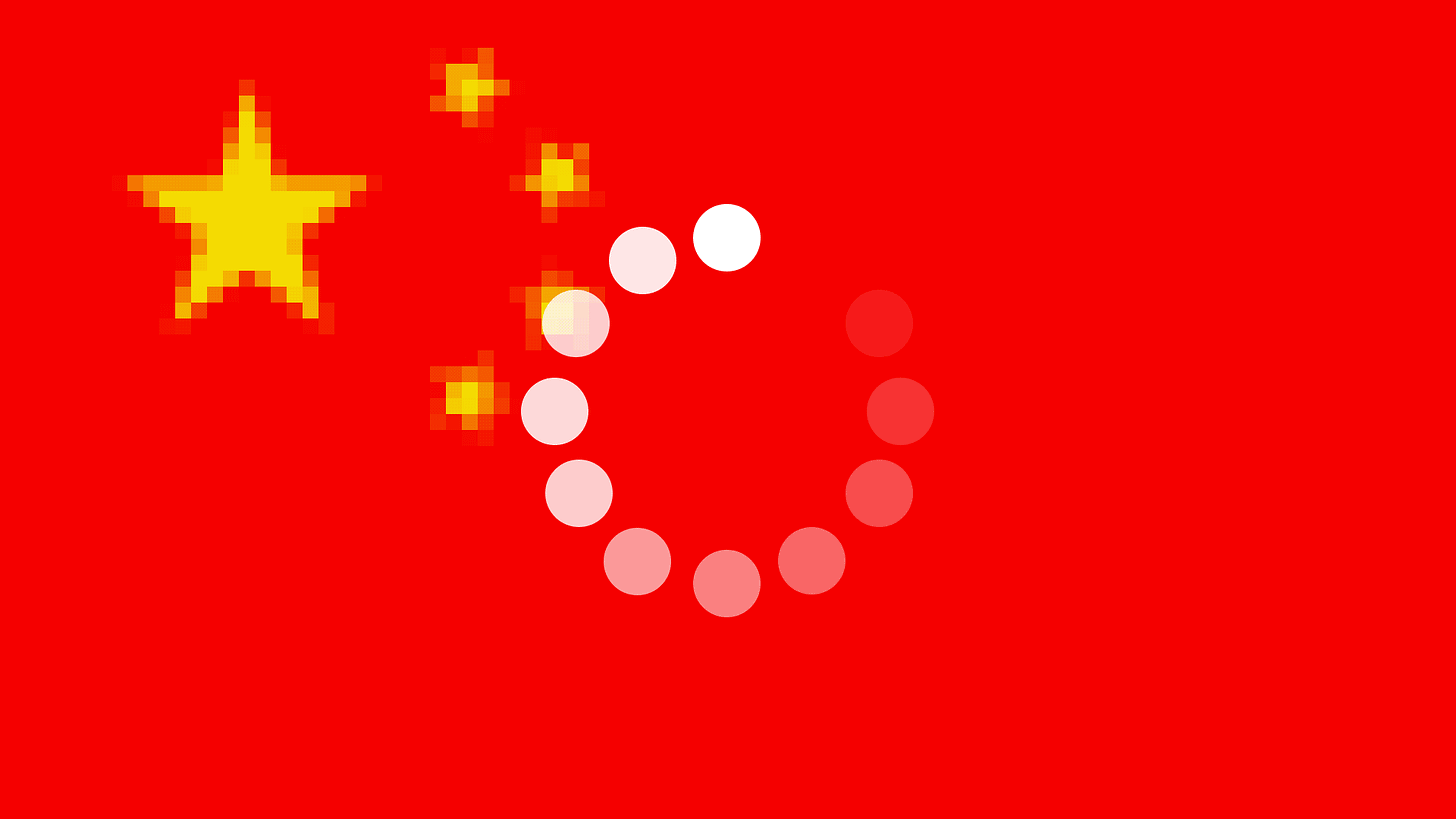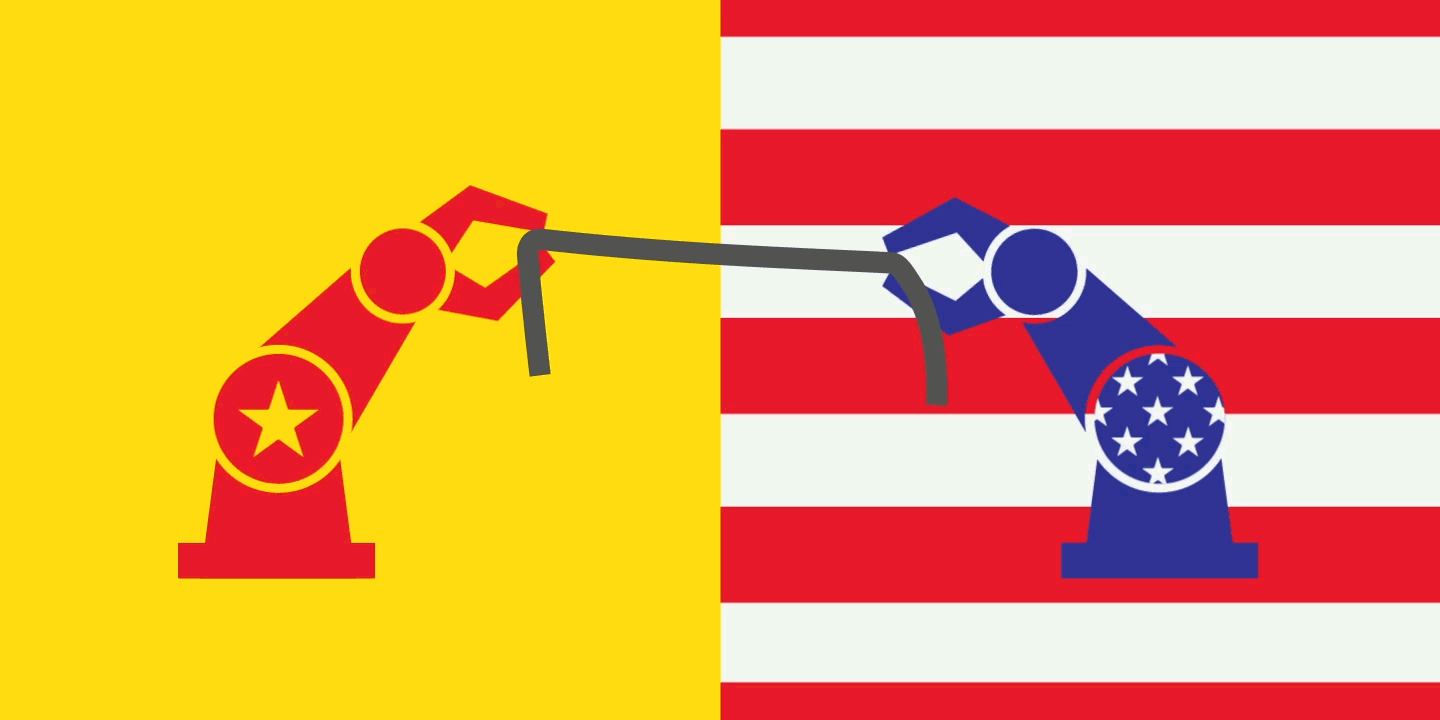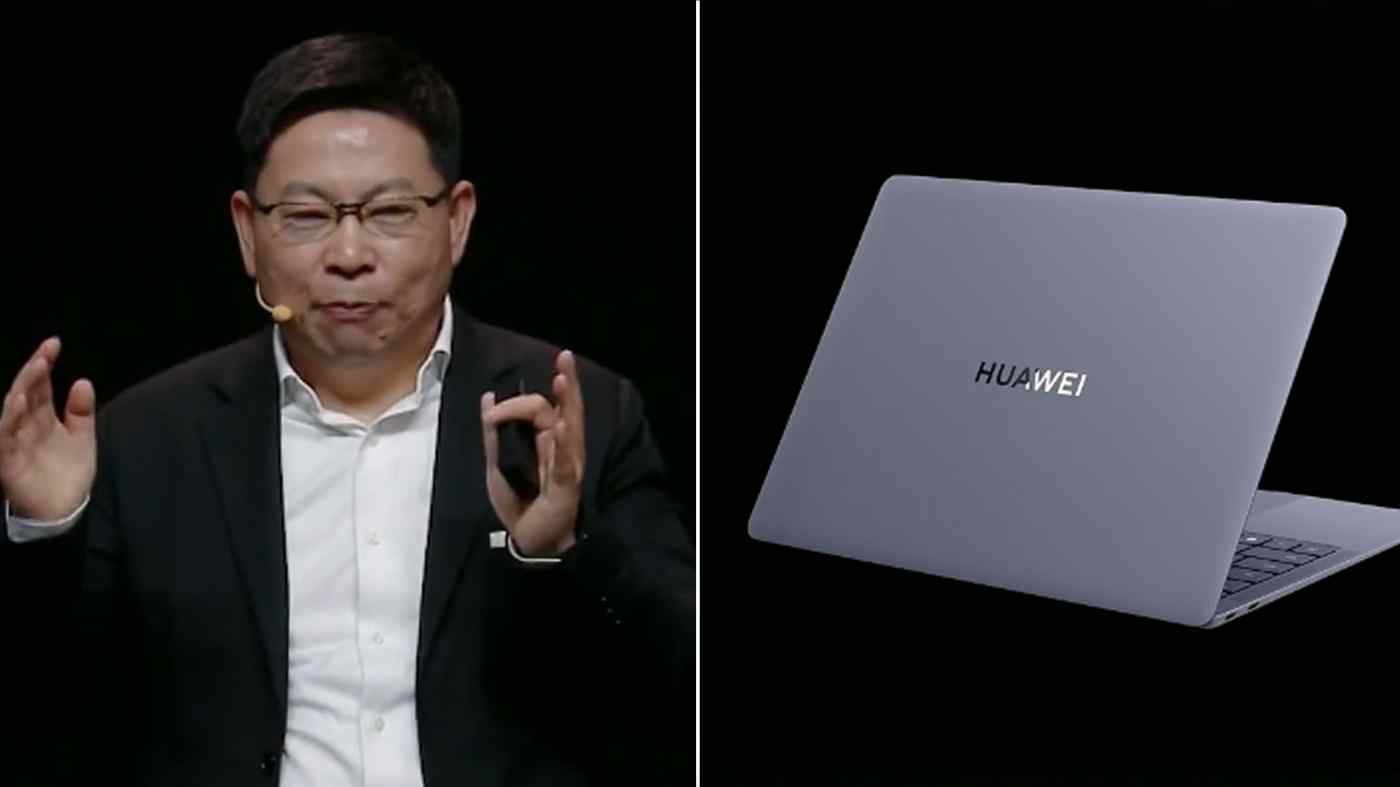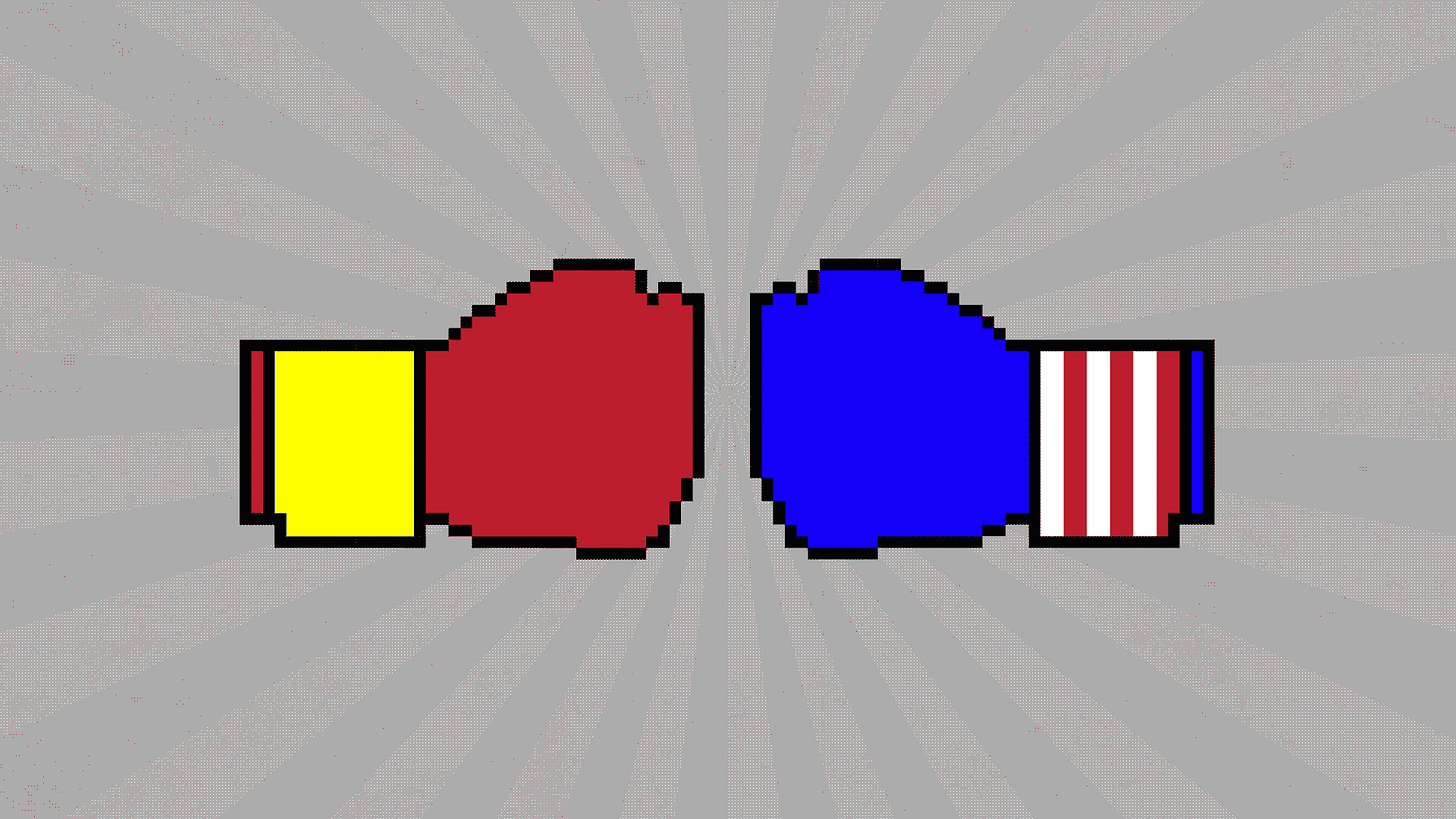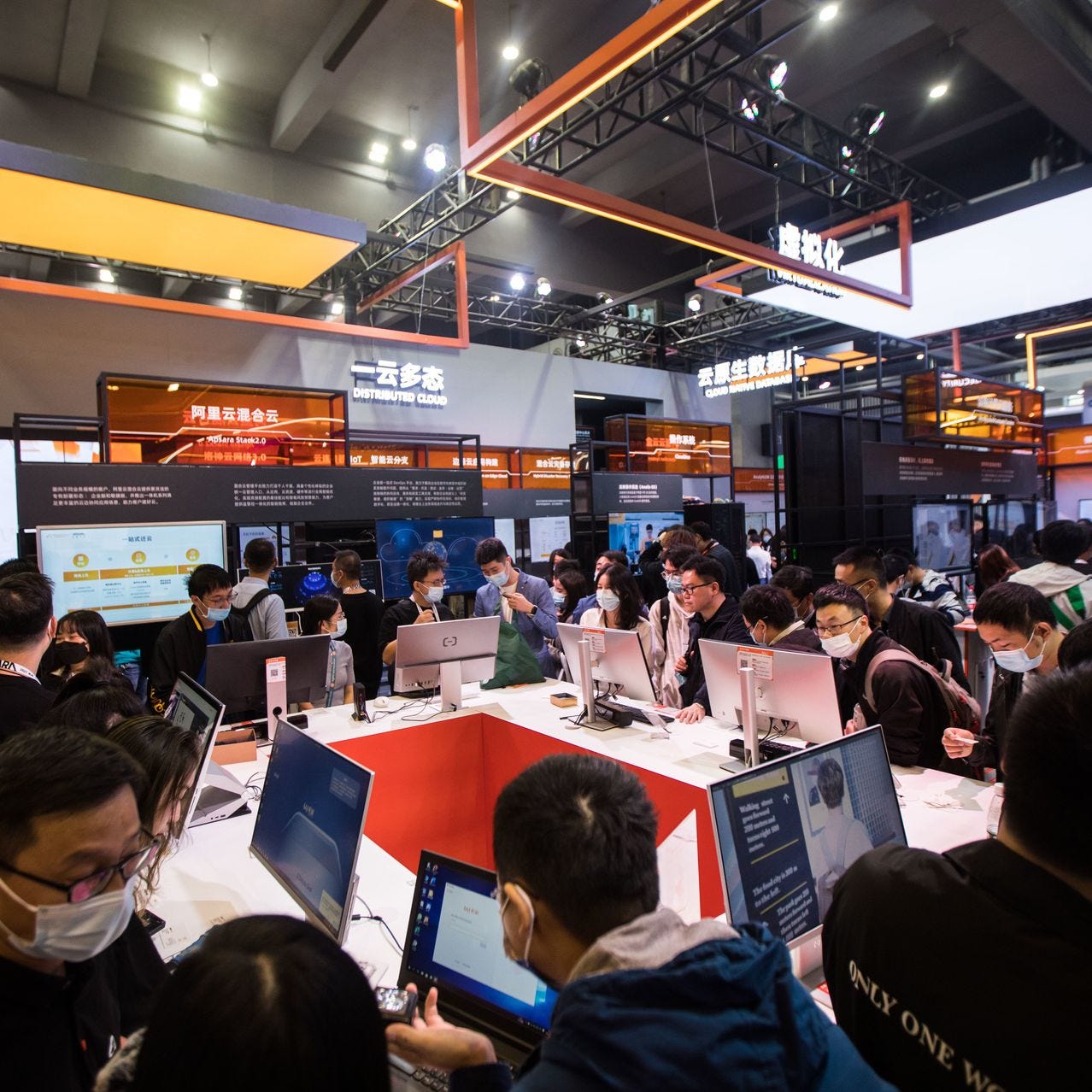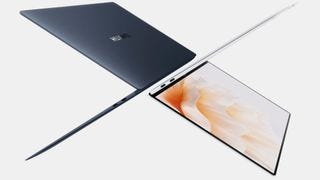AI: China disconnects from US Tech. RTZ #326
...more steps back on US/China 'Threading the Needle'
The Bigger Picture, April 14, 2024
Readers here know how I’ve long talked about the long-term importance of the US and China continuing to ‘Thread the Needle’ around the current geopolitical, tech and AI differences between the two countires, for their mutual and unilateral long-term interests. It’s a topic that I’ve viewed as a unique headwind, in the AI Tech Wave this time vs prior tech waves around the PC, Internet, Cloud, Mobile, and others. In recent weeks we’ve seen more unilateral moves by China to disconnect their government, state and private companies from US technologies, regardless of the longer term consequences. Would like to discuss the Bigger Picture here this Sunday.
What brought this up this week for me was the stark juxtaposition of this announcement by Chinese company Huawei with their newest Matebook X Pro ‘AI’ optimized laptop featuring the latest Intel chips. Here’s how Nikkei Asia highlights it in “Huawei says it will start selling PCs powered by Intel’s AI chip”:
“China's Huawei Technologies on Thursday unveiled its first artificial intelligence-powered PC, saying it will be equipped with Intel's latest chipset and run on its in-house operating system.”
“The announcement comes despite a U.S. clampdown on the company that has sharply restricted its access to advanced American technology.”
“Dubbed the MateBook X Pro, the new PC will run on the HarmonyOS and use the Pangu Large Language Model developed by Huawei, according to Richard Yu, CEO of Huawei's Consumer Business Group. LLMs are powerful AI algorithms that can be used to generate human-like conversation and images and translate text, among other things.”
“Yu said in at the company's spring product launch event that the computer will be powered by Intel's Core Ultra 9 processor, the American company's first chipset made with cutting-edge extreme ultraviolet lithography (EUV) equipment.”
“Intel has pitched its Core Ultra processor as a necessary element for a PC to carry out AI operations itself, rather than relying on access to AI servers on the cloud. The latest chipset uses Intel's powerful advanced packaging technologies to link different four tiles together, including central and graphic processors.”
“Yu said that while the MateBook X Pro was designed with Huawei's own Pangu LLM in mind, it can also accommodate outside partners' models, including Baidu's Ernie Bot and iFlytek's Spark.”
“AI is the biggest theme for the PC industry, which has witnessed a severe slowdown since the second half of 2022. Many makers such as Lenovo, Acer and Asustek Computer have high hopes that AI-enabled devices will energize the market. Intel forecasts 100 million AI PCs powered by its Core Ultra processor will be shipped by 2025.”
Of course many of those other PC companies are also Chinese companies, also leveraging US chips and components.
Consider the contrast ot the ‘business as usual’ aspect of the above announcement with the series of stories in recent weeks on how China is actively pressing its government agencies, state companies and private sector to de-emphasize US technologies in its home market and product offerings. Exhibit one of course was the announcement last Fall on restricting Apple iphones and devices in chinese government offices.
That’s accelerated as highlighted by the WSJ’s “China intensifies push to ‘Delete America’ from its Technology”:
”A directive known as Document 79 ramps up Beijing’s effort to replace U.S. tech with homegrown alternatives.”
“For American tech companies in China, the writing is on the wall. It’s also on paper, in Document 79.”
“The 2022 Chinese government directive expands a drive that is muscling U.S. technology out of the country—an effort some refer to as “Delete A,” for Delete America.”
“Document 79 was so sensitive that high-ranking officials and executives were only shown the order and weren’t allowed to make copies, people familiar with the matter said. It requires state-owned companies in finance, energy and other sectors to replace foreign software in their IT systems by 2027.”
“American tech giants had long thrived in China as they hot-wired the country’s meteoric industrial rise with computers, operating systems and software. Chinese leaders want to sever that relationship, driven by a push for self-sufficiency and concerns over the country’s long-term security.”
“The first targets were hardware makers. Dell, International Business Machines and Cisco Systems have gradually seen much of their equipment replaced by products from Chinese competitors.”
“Document 79, named for the numbering on the paper, targets companies that provide the software—enabling daily business operations from basic office tools to supply-chain management. The likes of Microsoft and Oracle are losing ground in the field, one of the last bastions of foreign tech profitability in the country.”
“The effort is just one salvo in a yearslong push by Chinese leader Xi Jinping for self-sufficiency in everything from critical technology such as semiconductors and fighter jets to the production of grain and oilseeds. The broader strategy is to make China less dependent on the West for food, raw materials and energy, and instead focus on domestic supply chains. “
The above was in early March. This month sees an acceleration with Reuters’ “China urges giant state firms to be tech ‘pillars’ in self-reliance drive’:
“China has urged big state-owned enterprises (SOEs) to play a key role in its drive to attain self-reliance in technology, raising the stakes in the race amid rifts with the United States.”
“With many Chinese firms and industries hit by a growing roster of export controls imposed by the United States, President Xi Jinping has repeatedly stressed the need for self-reliance in technology to prune use of foreign technology.”
And last month’s “China Tells telecom firms to phase out foreign chips in blow to Intel, AMD”.
Despite many Chinese entities trying to access US tech from Nvidia and other US companies despite their government’s accelerating bans.
China has long been trying to figure out its aspirations and ultimate goals in the times ahead. As the Harvard Business Review notes in “China vs the World: Whose Technology is it?” as far back as 2010:
“China’s determination to become a technologically advanced economy is driven as much by economic disillusionment with serving as the world’s factory for low-value products as it is by pragmatism.”
And of course all this of late is matched by the US pushing similar moves on curtailing US technology investments in China, and the current uniquely bipartisan actions barreling down on TikTok owned by China’s Bytedance. Despite lessons on similar bans in places like India.
At a high level these are two trains barreling down the same track for a technology collision. One that will likely not be in the net long-term interests of either country in terms of trade, tech and geopolitics. But the momentum is high on the forces to disconnect.
With relatively little counter-forces to ‘thread the needle’ in these conversations. Despite Huawei excitedly touting its newest ‘AI laptops’ with the latest Intel chips. Selling them while they’ve got ‘em, for now.
Which likely means repercussions for technology companies on both sides of the Divide. And their global consumers and stakeholders. Stay tuned.
(NOTE: The discussions here are for information purposes only, and not meant as investment advice at any time. Thanks for joining us here)




